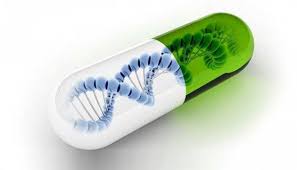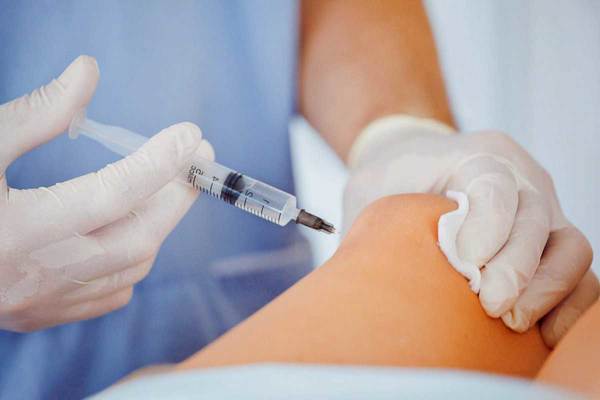Recent advances in biotechnology have made it possible to manipulate genetic sequences to treat various diseases in a process called gene therapy. However, progress in gene therapy has opened up the possibility of using genetic manipulation to improve athletic performance.
Genetic or cellular doping is defined as the non-therapeutic use of genes, genetic elements and / or cells to improve athletic performance.
gene therapy can be defined as the transfer of gene material to human cells to treat or prevent disease or dysfunction. This material is represented by DNA, RNA, substances that can directly interact with them, or genetically modified cells. The principle of gene therapy is based on the introduction of a therapeutic gene into a cell, or on the direct activation of certain genes, or even on inhibition of the transcription of certain genes.

Gene therapy
There are several mechanisms by which you can interact with a gene: transferring genes into cells, changing their codification and changing their expression.
For gene therapy, there are various possible systems for gene transfer within the cell. This requires a transmission system (vector) that transfers the genetic material to the target cell. Viruses have evolved specifically to transfer their genetic material into cells in order to reproduce and are therefore potential vectors for use in gene therapy. Plasmids are other possible carriers. Plasmids are currently the least expensive method due to ease of handling, but also the least efficient. Viral vectors, on the other hand, are already widely used in gene therapy to insert exogenous DNA into the genome of the target cell to be treated.
Genes can be specifically manipulated using different molecules. Antisense RNA sequences can be used to bind the mRNA of a gene and prevent the expression of the produced protein, blocking or disrupting the mRNA.
Finally, it is possible to develop molecules capable of specifically modifying the activity of a promoter (a substance that binds the genetic code and activates the transcription of a particular gene) or translation efficiency by increasing or decreasing the activity of a gene in this case, endogenous gene expression is activated without its introduction from outside. p>
The practice of genetic doping, the last frontier of sports cheating, uses gene manipulation techniques to promote the production of proteins useful for improving athletic performance.
Since there is a high risk that gene manipulation can also be used to improve athletic performance, the World Anti-Agent Agency Doping has already done so by placing genetic doping on the list of prohibited methods and substances.
WADA views genetic doping as the use of pharmacological or biological agents that alter gene expression. or the transfer of cells or genetic elements (DNA and RNA).
It is theoretically possible to manipulate any genome, all the levels of proteins present in the inner part of our body can be modulated through gene therapy. Consequently, genes that can alter physical abilities can also be manipulated.

Based on this principle, the possible goals of therapy aimed at improving athletic performance have already been identified.
The following genes are associated with aerobic endurance:
- angiotensin-converting enzyme (ACE)
- erythropoietin (EPO), increases erythropoiesis
- angiogenic growth factors such as VEGF
- peroxisome proliferation-activating receptor δ (PPAR-δ), encoding fatty acid oxidation enzymes, has already been shown to increase resistance in transgenic mice
- inducible hypoxia factor (HIF) that acts on erythropoiesis
- PGC1α can improve fatigue resistance and aerobic skills
The following genes are associated with muscle growth:
- mechanical growth factor (FGM)
- insulin-like growth factor 1 (IGF-1)
- other growth factors
- Growth Factor – Insulin-Like Binding Protein (IGFBP)
- growth hormone (GH)
- androgenic muscle receptor
- muscle glucocorticoid receptor
- Sex hormone binding protein (SHBG)
- myostatin, which is a muscle growth inhibitor
Other genes may raise the threshold for pain and fatigue resistance:
- endorphins and encephalins
- neurotransmitter receptors
- enzymes of neurotransmitter metabolism
- dopamine, norepinephrine and serotonin transporter proteins
Some of the aforementioned genes are already undergoing research to demonstrate how gene therapy can improve physical performance. For example, the effectiveness of intramuscular injection of the EPO gene using electrical impulses was analyzed to optimize the transduction process (factors). The gene was electrically injected into mice, rabbits and monkeys to test its protein production and biological effects. The study concluded that the injected EPO gene resulted in an increased concentration of circulating erythropoietin, suggesting the great potential of gene therapy for EPO production.

Inhibition of myostatin, a member of the transforming growth factor (TGF) -β superfamily, a negative regulator of skeletal muscle growth, is made possible by the administration of specific antibodies or drugs that bind to myostatin itself. This therapy has already been shown to lead to significant muscle growth. Already some experiments to manipulate genes with this gene in mice have created super rodents.
With genetic doping, multiple copies of the gene encoding IGF-1 can be inserted into strong skeletal muscle, causing an uncontrolled increase in muscle mass due to muscle cell hypertrophy and hyperplasia. This somatic gene insertion can be achieved by using two alternative vectors: plasmids or viruses.
This new form of doping poses a lot of difficulty in conducting detection tests. Detection of genetic doping can be achieved using a number of approaches, including both direct and indirect methods, however, these tests are currently still under optimization.
A possible clear and rapid test can be based on a simple blood test that detects foreign DNA present in peripheral blood. The first experiments were carried out on laboratory guinea pigs, which practiced genetic intramuscular doping.
Tests have shown that the test is effective even for small amounts of blood and up to 56 days after ingestion. The study was then validated on 327 blood samples taken by both professional and amateur athletes.
Or, immune responses can be used, since the most effective genetic modification techniques involve the use of viral vectors. In most cases, these vectors lead to immune responses that limit retreatment. These immune responses can be used as an indicator of possible genetic manipulation.
Possible Methods for the Detection of Genetic Doping (Oliveira)
Of course, this new frontier of medicine and therefore doping will bring in the coming years many new doping drugs with unimaginable potential. The ability to directly interact with genes that affect physical ability can turn people into supermen, make bodies perfect, but in addition to the unlimited possibilities that gene therapy can also bring risks associated with its abuse, they are still unthinkable. Only future history will ever be able to show what a person is capable of, if genetically manipulated appropriately.
